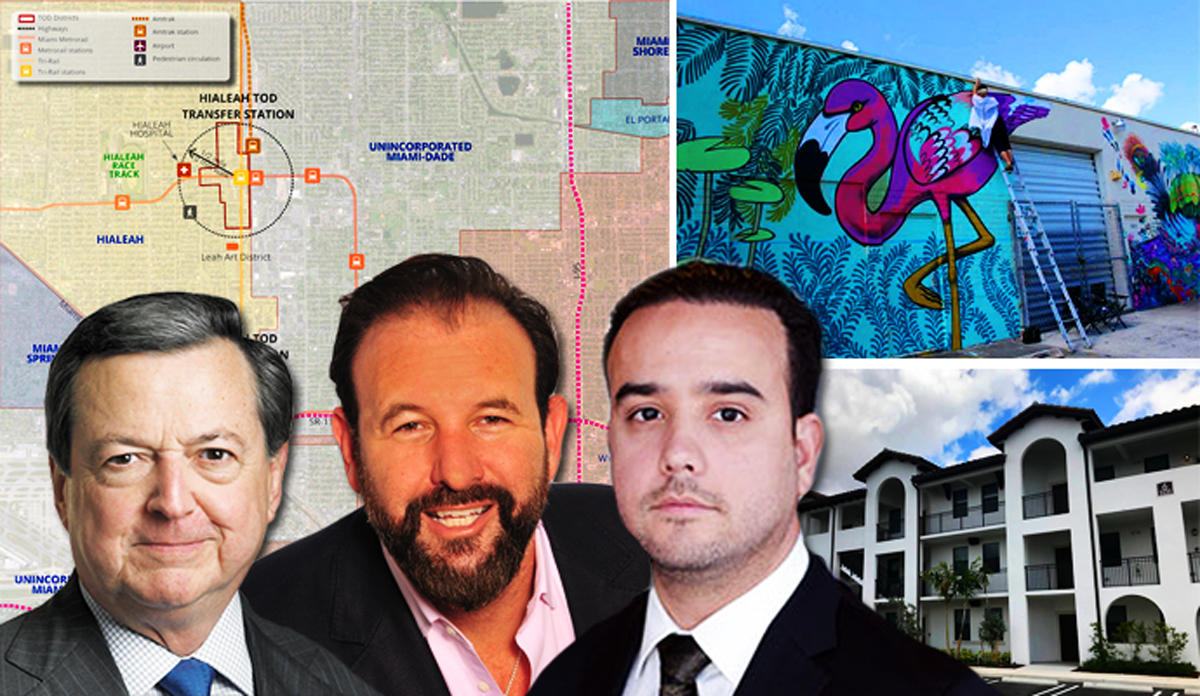Trending
Is Hialeah “the next big thing” for real estate investment in SoFla?
The industrial city has begun encouraging more development but roadblocks remain

Hialeah is hot. The city has been experiencing a surge in real estate investment, bolstering its reputation as an industrial hub while also identifying it as a more welcoming place for multifamily and commercial construction following recent moves to encourage development.
But investors drawn to cheaper land prices and those who may be looking to make a quick buck on a flip could find it difficult in this working-class city where rents remain low as does the median household income, which hovers at $30,000, local developers and brokers say.
Hialeah’s sales volume last year was $217.1 million, a huge jump from $83.6 million in 2016, with most of that attributed to industrial warehouse activity, according to Real Capital Analytics.
The city has drawn strong interest from prominent developers like Codina Partners, which is planning Beacon Logistics Park, a massive warehouse on as much as 1.5 million square feet of space.
But other real estate sectors have also been steadily rising over the last few years.
Rents on office properties increased to $26.05 per square foot in the fourth quarter of 2017, up from $22.3 per square foot in the first quarter of 2014, according to CoStar data. In retail, the data shows that rental rates at the end of 2017 increased to $29.52 per square foot, up from $22.14 per square foot during the first quarter of 2014.
From a population of 1,500 in 1925, Hialeah has emerged as a working-class city over the ensuing decades, and is now the state’s sixth largest with more than 224,000 people.
As the city has grown, it has also attracted demand for new multifamily construction, along with investment in older, garden-style apartments, according to Marcus & Millichap’s Arthur Porosoff.
“You have a buying pool that you didn’t have before and that has to do with new investors looking for the next big thing,” Porosoff said, adding he’s seen a majority of multifamily investment in Hialeah coming from New York.
“A lot of people didn’t know about Hialeah,” he said. “When they thought about Miami they thought about Miami Beach or they would buy in the Design District and Edgewater. And as those markets values went up, they realized they can’t buy cheap over there anymore.”
Hialeah-based developer Maurice Cayon said he prefers “buying there than any other place because the numbers are right.” As head of his family-run real estate firm, Cayon Group, he owns a heavy concentration of commercial properties throughout the city and just completed Las Palmas, a 226-unit multifamily complex at 3500 West Ninth Avenue, in partnership with Tom Cabrerizo of CFH Group. It’s about 96 percent leased with rents ranging between $1,575 a month to $1,850 a month, according to its website.
The city is revamping the eastern section to court millennials. In 2016, the Hialeah City Council gave final approval to increase the density on more than 300 acres in the district in order to spur commercial and residential development there. The rezoning centers around two transit locations: Hialeah Market Station and Tri-Rail/Metrorail Transfer Station.
That area, often characterized as an industrial and manufacturing district, now allows developers to build up to 15 stories with 125 residential units per acre, depending on the location. The plans also allow for reduced parking requirements on 80 acres of land.
A representative for Hialeah Mayor Carlos Hernandez did not return repeated requests for comment on the rezoning and any recent redevelopment moves in the city.
Multifamily buildings are now trading in the range of $150,000 per unit, Porosoff said. And though most buildings sport low rents, he said, buyers can still expect a 6 percent cap rate, translating to steady income for investors.
Rents for multifamily developments built in the 1960s and ‘70s are about $1,000 for a one-bedroom and between $1,000 and $1,200 for a two-bedroom. Newer developments charge about $1,250 to $1,350 for a one-bedroom and $1,450 to $1,550 for a two-bedroom.
“Rent in Hialeah has gone up about 40 percent the last 10 years,” said developer Alex Ruiz, principal of Prestige Companies. Over the last two years Prestige has completed more than 200 units in the area. It’s in the middle of delivering Las Vistas at Amelia, a 174-unit rental complex in Hialeah.
Ruiz, a former Hialeah resident, said while multifamily construction is picking up, the city’s residents cannot yet support high-rise projects that officials have envisioned.
He said the rezoning has drawn a number of investors who have bought the remaining pieces of land. But he worries Hialeah’s cheaper rental market is a double-edged sword.
“There’s been massive amount of new speculators looking for density and approvals with the intention of flipping the land, but [where rents are at now] it’s next to impossible.”




